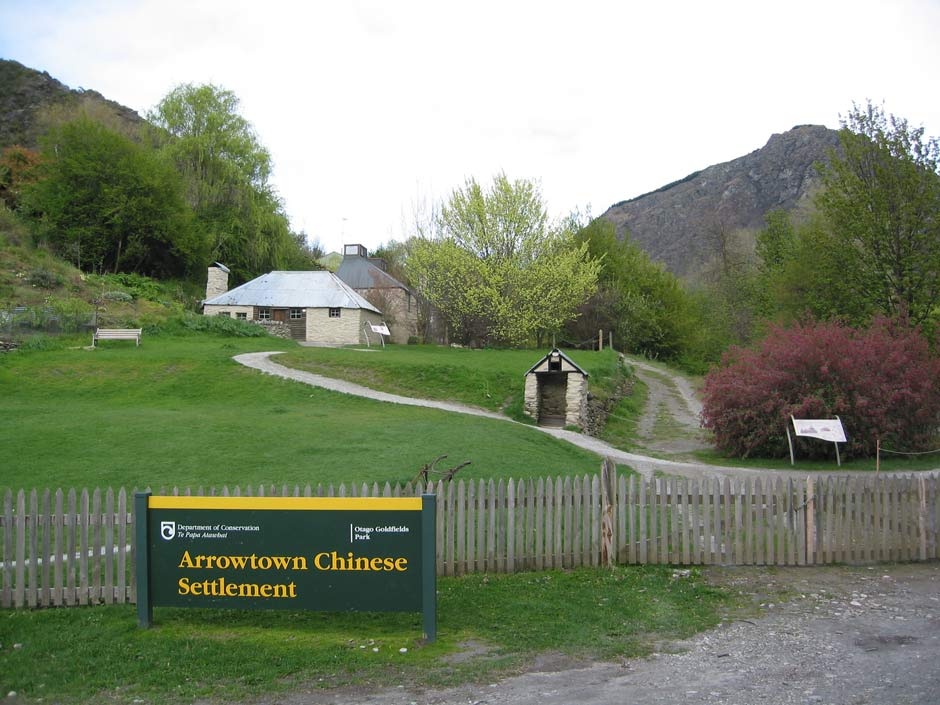
Arrowtown Chinese Settlement (1869)
Stranded in paradise?
In 1998 George Griffiths and Anthony Ritchie saluted 150 years of organised European settlement in Otago with their musical pageant, From the southern marches. Just before the curtain came down they had the ghost of goldfields balladeer Frederick Thatcher musing about modern Otago. ‘We don't eat proper porridge/Or haggises for tea’, this imitated ‘Inimitable’ sang, ‘it’s dimsims and chapatti/Our New Identity’ – a reference to the term that the Scots Presbyterians used against others, especially English latecomers.
A hundred years ago many would have taken a dim view of the dim sims or anything Chinese. The first ‘Celestials’ reached the goldfields in the mid-1860s, initially recruited by provincial authorities. By 1876 4000 were picking over ground European miners had abandoned (not that that stopped the latter from howling about race contagion). Almost entirely male (only nine of the 5004 Chinese here in 1881 were women), these hardy, mainly Cantonese migrants built their own isolated little communities. Few made enough money to return home triumphantly and most died here old and persecuted. ‘There is about as much distinction between a European and a Chinaman as that between a Chinaman and a monkey’, Premier Richard Seddon once said. A discriminatory poll-tax was not abolished until 1944. It took until 2002 for the New Zealand government to formally apologise to the Chinese community.
Central Otago had several Chinese settlements. Arrowtown’s was studied extensively by archaeologists in the early 1980s and is the best memorial to these settlers. It is now a mixture of stabilised hut ruins, reconstructions and restorations. The most prominent is what is now known as Ah Lum’s Store, once one of several. Market gardener Wong Hop Lee built it about 1883. It got its name from a later occupant, Ah Lum, who bought the building about 1909. It measures just 7.5 by 4.8 m, with local schist providing the walls and floors and corrugated iron the roof. Inside that tiny box, wooden partitions divided off five rooms. The store occupied half the space, some of the goods hanging from the ceiling by hooks and wires. Behind were a bank/office, kitchen and bedrooms, Ah Lum's protected by iron bars (he was also banker to the local Chinese community). Ah Lum died in 1927, one of the last entrepreneurs of an ageing, dying goldfields community.
Further information
This site is item number 37 on the History of New Zealand in 100 Places list.
On the ground
Chinatown is professionally interpreted with signboards.
Websites
- Heritage New Zealand List
- DoC site information
- Chinese miners - Te Ara
- Hands on History
- Visual walk-through of site (video)
Books
- Julia Bradshaw, Arrowtown: history & walks, University of Otago Press, Dunedin, 2001
- James Ng, Windows on a Chinese past, vol. 1, Otago Heritage Books, Dunedin, 1993





Community contributions